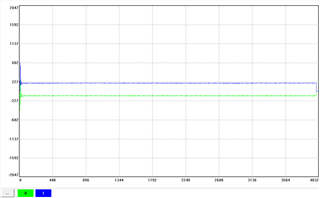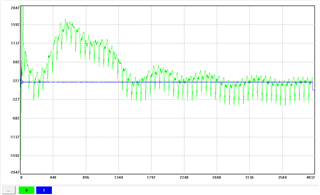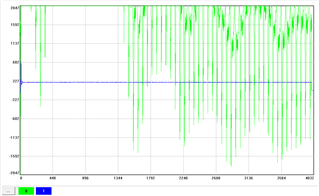Other Parts Discussed in Thread: , TX7332
The problem here occurs when we use AFE5832 to receive data. When we use test pattern, everything is ok and the received test data for all channels appear normal.
However, when we switch to make the input signal of AFE5832 come from the external front end, all even channels are still normal, but all odd channels have abnormal data. The data of all odd channels appears very large. We also found that the abnormal data of all odd channels increased when we repeated the data-receiving process of AFE5832.
We already have set the digital processing in 5832 chip to be bypassed.
Does anyone have any idea about how this situation happens?
Thanks!
Yinhui





